 |
 |
 |
| |
Maternal HBV Viremia Is Associated With Adverse Infant Outcomes In HIV/HBV Women:
Post-Hoc Analysis of HPTN 046
|
| |
| |
Reported by Jules Levin
CROI 2019 March 4-7 Seattle
Debika Bhattacharya, Rong Guo, Chi-Hong Tseng, Lynda Emel, Ren Sun, Shih-Hsin Chiu, Lynda Stranix-Chibanda, Tsungai Chipato, Neaka Z Mohtashemi, Kenneth Kintu, Karim P Manji, Dhayendre Moodley, Chloe Thio, Yvonne Maldonado, Judith Currier
WEBCAST: http://www.croiwebcasts.org/console/player/41082?mediaType=slideVideo&&crd_fl=0&ssmsrq=1553018781649&ctms=5000&csmsrq=5051
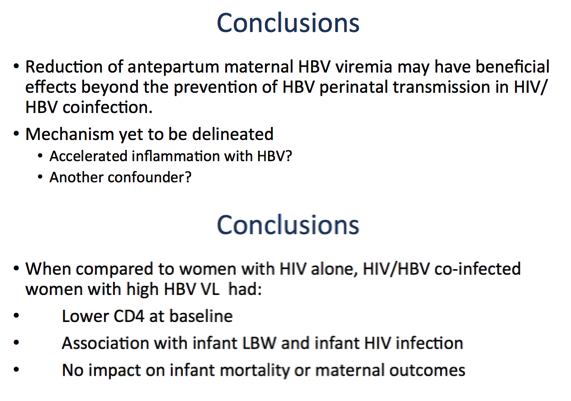
Program abstract
HIV/HBV coinfection is common, yet there is little information on maternal and infant clinical outcomes. We assessed the prevalence of HBV coinfection and its impact on HIV transmission and infant and maternal outcomes in HPTN 046, a HIV mother-to-child (MTCT) transmission study.
HPTN 046 was a randomized controlled clinical trial of HIV MTCT which evaluated 6 months of infant nevirapine vs placebo for HIV prevention. Mother-infant pairs were enrolled in sub-Saharan Africa from 2007-2010; 1579 women (78%) also received ART. Maternal samples were retrospectively tested for hepatitis B surface antigen (HBsAg), and if positive, were tested for hepatitis B e antigen (HBeAg) at study entry and HBV viral load (VL) at delivery. Women who were HBsAg positive were classified as HIV-HBV co-infected (HIV-HBV). High HBV VL was defined as >10[sup]6[/sup] IU/ml. The impact of HIV/HBV coinfection on HIV MTCT, low birth weight (LBW), infant mortality and maternal premature rupture of membranes and C-section was assessed using multivariate (MV) logistic and Cox regression.
Among 2025 HIV-infected (HIV) women, 88 (4.3%) were HIV-HBV. HIV-HBV women with high HBV VL had lower median CD4 T-cell count at study entry, when compared to HIV+/HBV- women or HIV-HBV women with HBV VL < 106 IU/ml (320, 490, and 434 cells/mm³, respectively (p<0.007)). In MV analysis, adjusted for maternal CD4, age, and maternal ART, infants born to women with high HBV VL were more likely to be low birth weight (LBW), compared to HIV+/HBV- and HBV low VL women: [30% (3/10) vs 10% (194/1953) vs 6% (5/78), respectively, p=0.03)]. In a dose response analysis, HBV VL greater than 102 IU/ML was associated with LBW [RR=6.1 (95% CI 1.31 - 28.39)]. HIV MTCT occurred in 2/10, 0/78, and 53/1953 high HBV VL, low HBV VL, and HIV+/HBV – women, respectively. High HBV VL was associated with HIV MTCT [(HR 6.75 (95% CI 1.86 – 24.50)]. There was no impact on infant mortality or maternal outcomes at 18 months.
In HIV/HBV coinfected women, HBV replication increases the risk for poor infant outcomes including LBW and potentially HIV MTCT. Reduction of antepartum HBV viremia may have beneficial effects beyond the prevention of HBV MTCT in HIV/HBV coinfection.
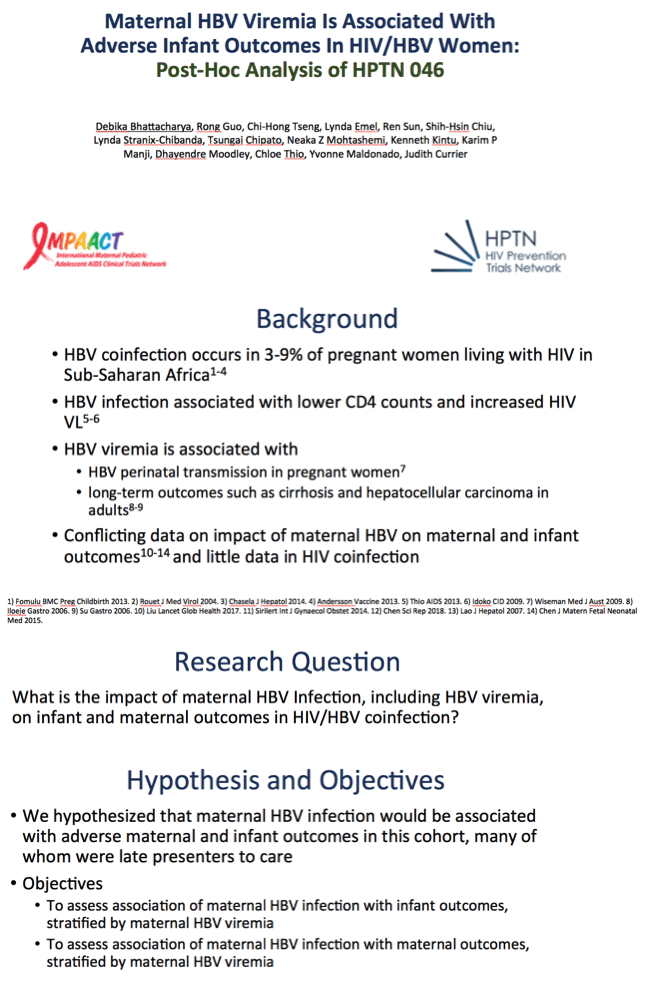
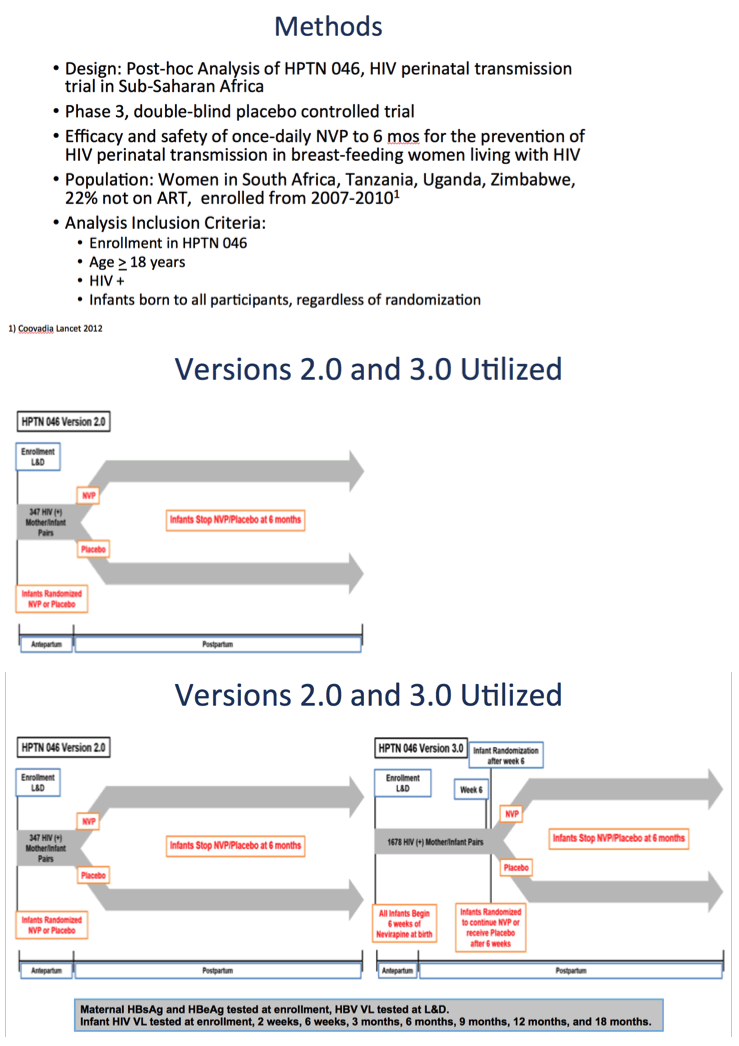
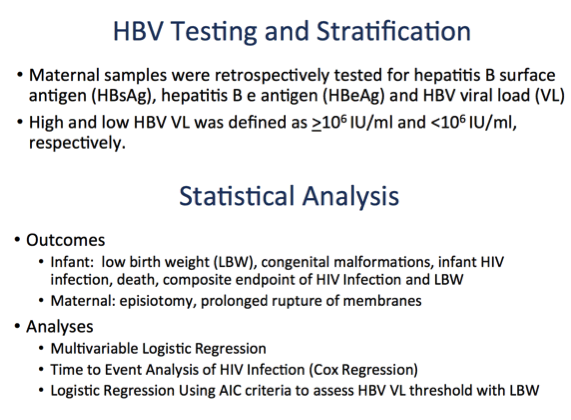
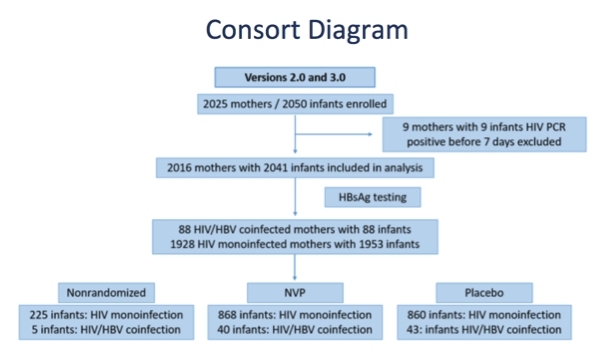
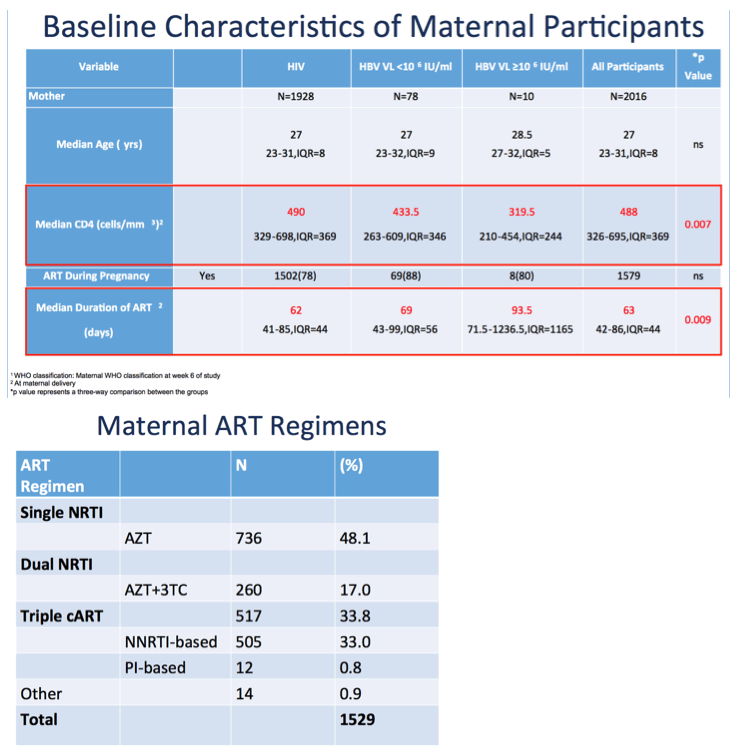
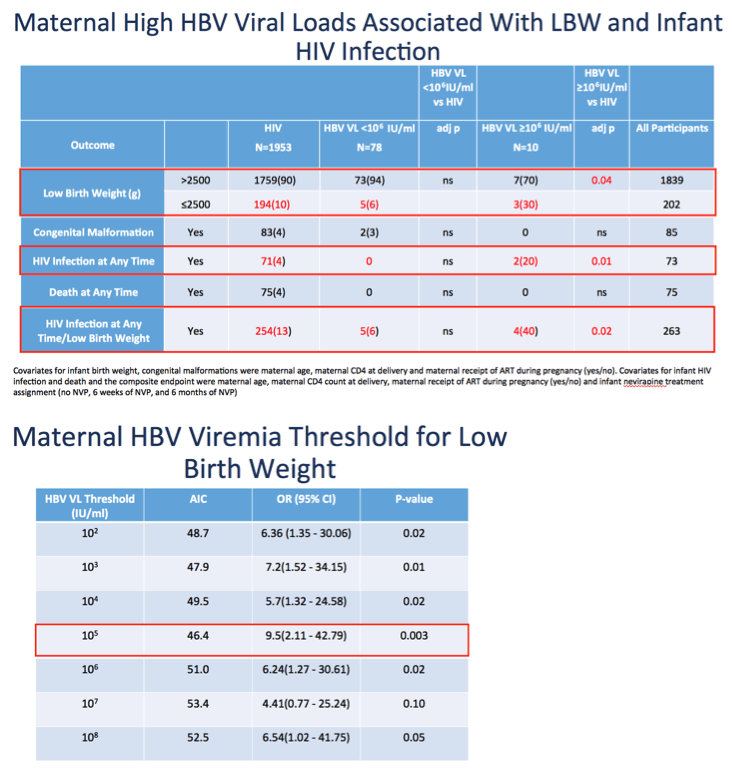
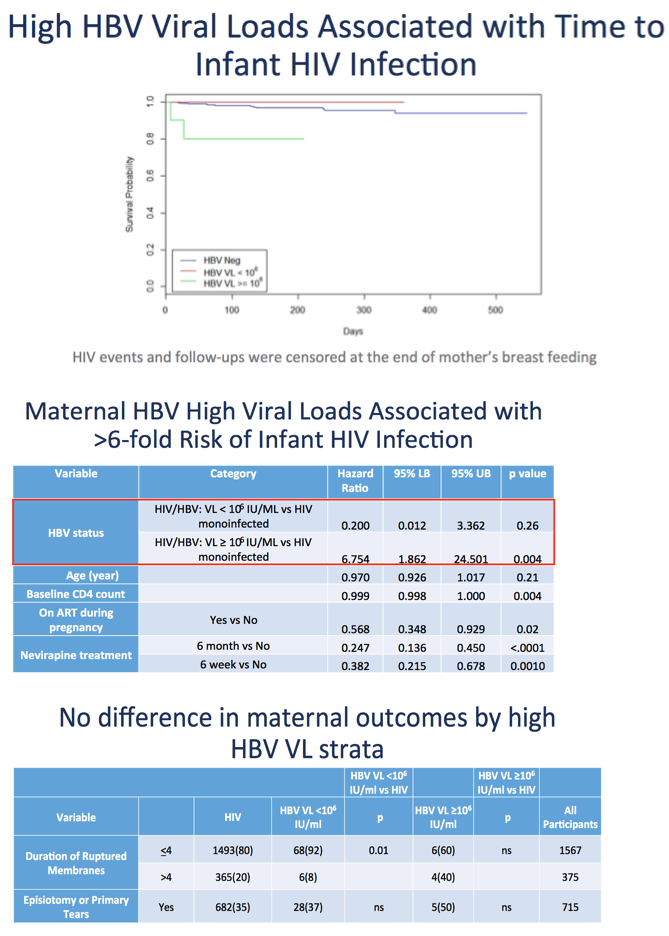
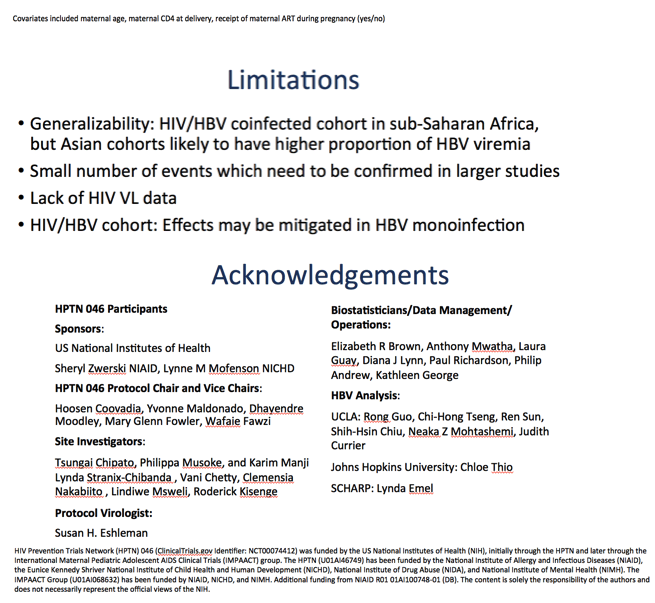
|
| |
|
 |
 |
|
|